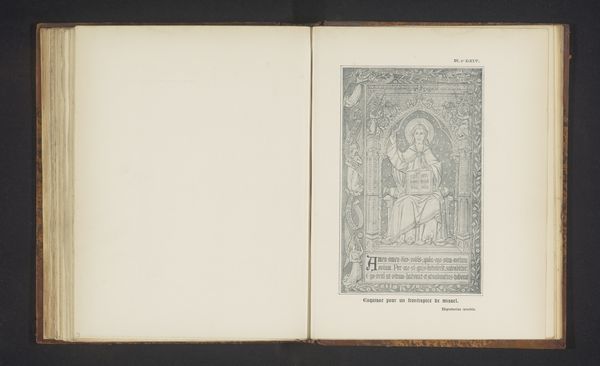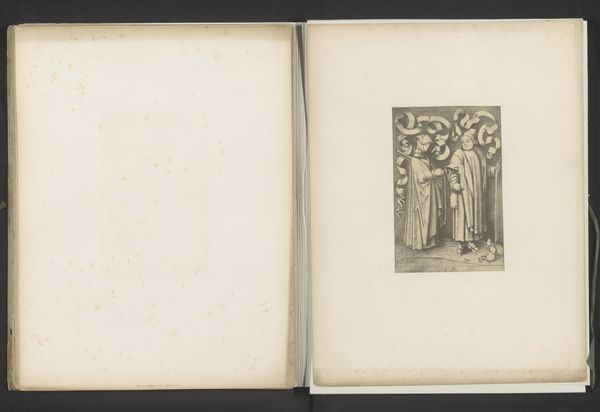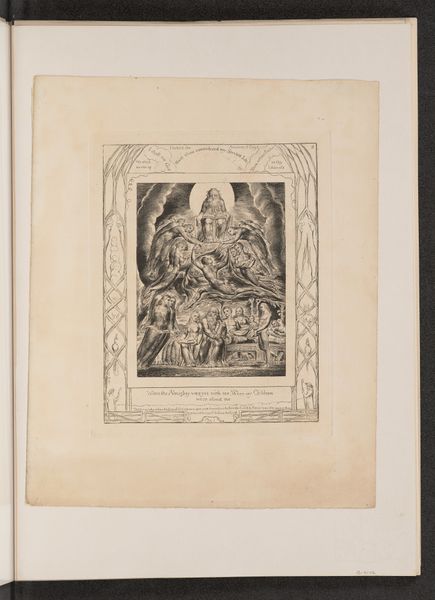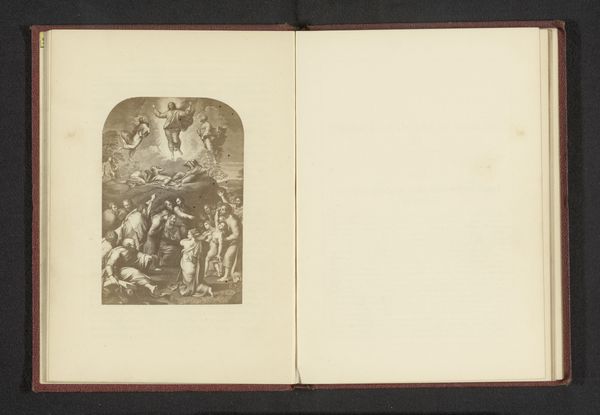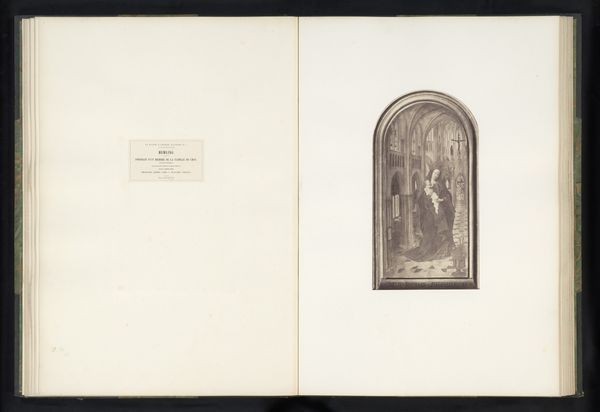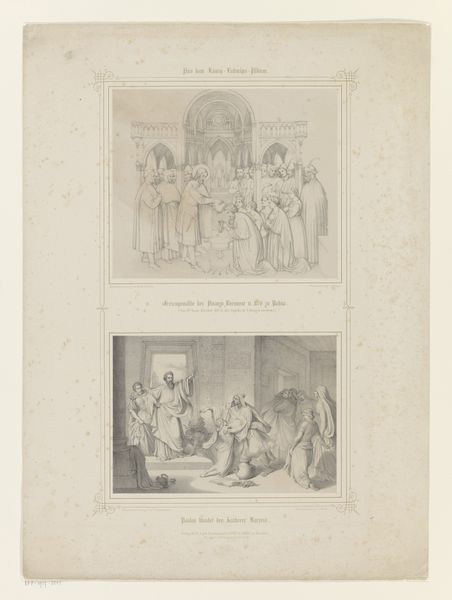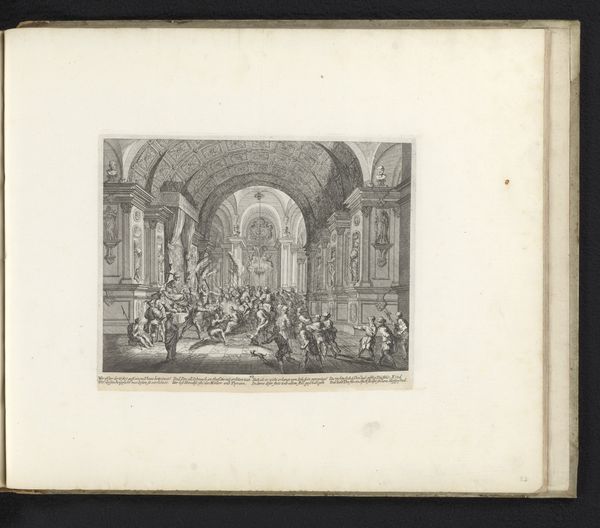
Reproductie van een schets voor een fresco in de Abdij van Maredsous, België, afgebeeld de kruisafneming before 1896
0:00
0:00
drawing, paper, fresco, pencil, pen
#
drawing
#
aged paper
#
toned paper
#
medieval
#
narrative-art
#
old engraving style
#
sketch book
#
hand drawn type
#
figuration
#
paper
#
fresco
#
personal sketchbook
#
hand-drawn typeface
#
pencil
#
line
#
pen work
#
sketchbook drawing
#
pen
#
history-painting
#
sketchbook art
Dimensions: height 186 mm, width 150 mm
Copyright: Rijks Museum: Open Domain
Joseph Casier made this reproduction of a fresco sketch in Belgium, depicting the Deposition of Christ, using traditional printmaking techniques. The stark contrast between the light paper and the delicate grey lines is typical of the medium. Each line, etched or engraved into a metal plate, is imbued with the artist’s intention, dictating the tone and texture of the final print. But unlike the original fresco, which would have been directly painted onto a wall, this print allows for the image to be reproduced and widely disseminated. The reproductive nature of this image raises interesting questions about labor and artistic value. While Casier employed skilled handcraft to create the print, the image itself is a copy. This act of reproduction opens the artwork up to a wider audience, democratizing access to religious imagery, whilst also perhaps diminishing the aura of the original fresco. Ultimately, understanding the materials and processes behind this print allows us to appreciate its role in the broader social and cultural context of late 19th-century Europe.
Comments
No comments
Be the first to comment and join the conversation on the ultimate creative platform.


